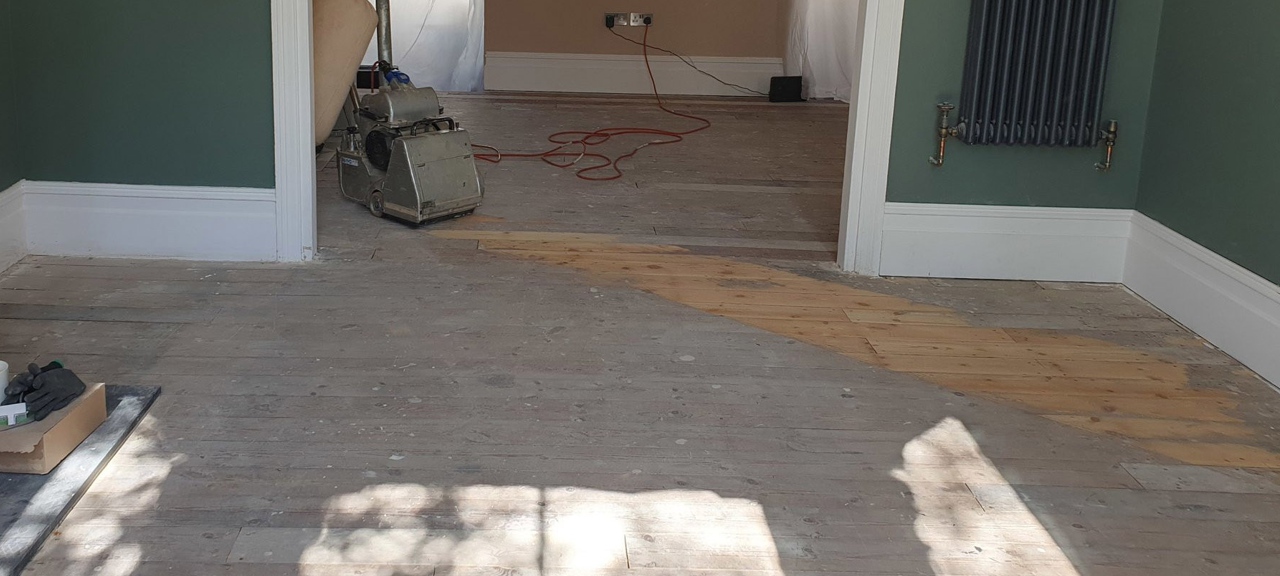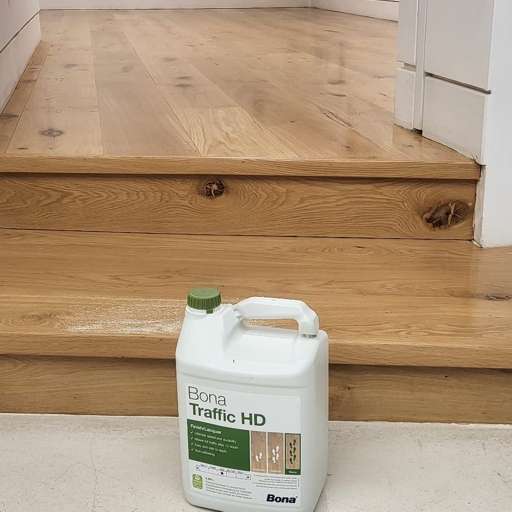As a homeowner, you know the joy a beautifully restored wooden floor can bring. It adds warmth, character, and often, significant value to your home. But when those cherished planks start showing signs of wear – from dullness to deep scratches – the question of restoration naturally leads to another: "What will it cost?"
Floor restoration isn't a one-size-fits-all service. The price can vary significantly depending on several key factors, turning a simple quote into a complex calculation. Understanding these elements will empower you to have more informed conversations with professionals and budget effectively.
1. The Type of Wooden Flooring You Have
The very foundation of your floor plays a huge role in the restoration process and, consequently, the price and your budget. Different types of wooden flooring demand different approaches, machinery, and expertise:
Solid Wood Floorboards: Often found in period properties, these individual planks (like pine, oak, or Douglas fir) are robust. Their thickness allows for multiple turns of wood floor sanding over their lifetime, making them a prime candidate for extensive restoration.
Engineered Wood Flooring: Comprising a real wood top layer bonded to a stable core, engineered floors are popular for their stability. The crucial factor here is the thickness of the top layer. A thin top layer (e.g., 2-3mm) allows for only very light sanding or just a "screen and recoat" (applying new finish without deep sanding), while a thicker one (4-6mm) can withstand more substantial restoration.
Hardwood Flooring: This refers to the timber species itself (e.g., Oak, Walnut, Maple). Hardwoods are denser and more durable, requiring robust machinery and careful technique during sanding compared to softer woods.
Parquet Flooring: Known for its intricate patterns (like herringbone, chevron, or basket weave), parquet requires exceptional skill and precision. The floor sanding process must follow the grain direction of each individual block, making it a significantly more time-consuming and specialised job, which will be reflected in the cost.

2. The Overall Condition of Your Floors
Think of your floor as a patient: a minor ailment requires less intervention than a major injury. The level of wear and tear directly impacts the labour and materials needed:
Light Wear & Tear: If your floor only has surface scuffs, general dullness, or minor scratches, it might just need a relatively light sanding pass and a new protective finish. This is the least labour-intensive option.
Deep Scratches and Gouges: Damage that penetrates deep into the wood will necessitate more aggressive and repeated sanding passes to remove the imperfections entirely. This means more time on the job, more abrasive materials, and consequently, a higher cost.
Evenness and Level Throughout: If your floorboards are significantly uneven, bowing, or dipping in certain areas, this will add complexity. While sanding can correct minor undulations, severe unevenness might indicate underlying subfloor issues that require more extensive and costly remedial work to ensure a truly flat and stable surface.


3. Repair Work Required
Restoration isn't just about sanding and finishing; it's about making the floor sound again. If your floor has structural issues or missing elements, repairs will be necessary before any sanding can begin, adding to your overall bill:
Missing or Damaged Boards: Rotting, warped, split, or missing planks will need to be carefully removed and replaced with matching timber. Sourcing reclaimed boards that blend seamlessly with your existing floor can be time-consuming and adds material costs.
Loose Planks: Boards that creak or lift when stepped on will need to be re-secured to the subfloor.
Subfloor Issues: In some cases, floor issues might stem from problems with the subfloor itself (e.g., rot, damp, instability), which would require significant work to rectify.
4. Customisation: Staining and Gap Filling Services
Beyond simply restoring the existing look, you might opt for services that transform your floor's appearance:
Colour Change with Staining: If you desire a completely new aesthetic, a wood stain can dramatically alter the colour of your floor, from light washes to rich dark tones. This involves an additional application step after sanding, adding both material cost for the stain and labour time.
Gap Filling Service: Common in older homes with traditional floorboards, gaps between planks can allow drafts, noise, and even dust. Filling these gaps with a mixture of resin and sawdust (from your floor's own sanding dust for a perfect match) or with reclaimed wooden slivers is a popular service that creates a more seamless, insulated, and aesthetically pleasing finish. This is a separate, labour-intensive step that will increase the quote.
5. Your Choice of Finish

Once your floor is beautifully sanded and any repairs are complete, it needs protection and that perfect final look. The type of protective finish you choose significantly impacts the cost:
Lacquers (Varnish): Popular for their durability and low maintenance, lacquers form a protective layer on the wood surface. They come in various sheens (matte, satin, gloss). High-quality, professional-grade lacquers (especially those designed for high-traffic areas) will cost more.
Oils (e.g., Hardwax Oil): These finishes penetrate the wood, enhancing its natural look and feel. They offer a more natural, often matte or satin appearance and are easier to spot repair. Quality oils can be more expensive per litre than some lacquers and may require more frequent maintenance in very high-traffic zones.
Number of Coats: More coats of your chosen finish generally mean enhanced durability and protection, but also directly translate to higher material usage and increased labour time.
6. Working Hours: Overnight or Bank Holiday Premiums
Most floor restoration work is completed during standard working hours. However, if your project demands a faster turnaround or needs to minimise disruption to a business or busy household, you might request work outside of these hours:
Overnight or Weekend Work: Expect a premium rate for services completed outside of regular business hours (e.g., evenings, nights, or weekends).
Bank Holiday Work: Projects undertaken on Bank Holidays will almost certainly incur significantly higher charges, as contractors typically factor in premium pay for their staff. This option is usually reserved for urgent commercial projects or where strict deadlines are in place.
7. Contractor's VAT Registration
When obtaining quotes, it's important to clarify if the contractor is VAT registered.
VAT Registered: If a contractor is VAT registered, they are legally required to add the current rate of VAT (Value Added Tax, currently 20% in the UK) to their services. This means the total price you pay will be 20% higher than their quoted net cost. VAT-registered businesses are typically larger, indicating an established and trustworthy floor sanding company.
Not VAT Registered: Smaller, independent contractors may not be VAT registered if their annual turnover falls below the VAT threshold. In such cases, they will not add VAT to your invoice, potentially making their quote seem cheaper on the surface. However, this doesn't always mean they are less professional; it just means they are smaller.
Always confirm whether a quote is "plus VAT" or "inclusive of VAT" to avoid surprises.
8. Project Size and Professional Expertise
Size of the Area: While seemingly obvious, the overall square footage you wish to restore is the primary determinant of the base cost. Most professionals quote a price per square metre.
Geographical Location: As you're in Kingston upon Thames, be aware that service prices in London and the South East tend to be higher than in other parts of the UK due to elevated operating costs and demand.
Contractor's Experience and Reputation: Highly experienced and reputable professionals, often with relevant certifications and strong customer reviews, may charge more. However, their expertise often translates to superior results, greater efficiency, and valuable advice, potentially saving you money on mistakes or re-dos down the line.
Need a Floor Sanding Service?
Contact Floorworks™ today for professional advice and no-bligation visit to assess the details and needs of your wooden floors prior to restoration.

Getting an Accurate Quote
To navigate these factors and get the most accurate price for your floor restoration, always:
Get Multiple Quotes: Contact 2-3 local, reputable professionals.
Request a Site Visit: An in-person assessment is crucial. It allows the contractor to properly evaluate the floor's type, its precise condition (including levelness), identify any necessary repairs, and accurately measure the area.
Ask for a Detailed Breakdown: Ensure the quote clearly itemises all services (sanding, specific repairs, gap filling, type and number of finish coats, staining if applicable) and materials. Also, confirm whether the price is inclusive of VAT or if VAT will be added. Inquire about any potential "hidden" costs like waste disposal or parking fees.
By understanding the price influencing factors, you'll be well-equipped to discuss your floor restoration needs with confidence and ensure your beautiful wooden floors get the expert care they truly deserve.




